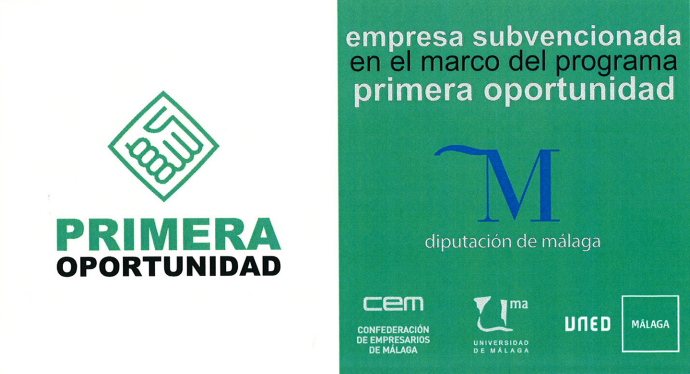- What is a value proposition and why is it crucial for your business?
- Essential steps in creating an effective value proposition
- Practical examples of successful value propositions
- Common mistakes in creating a value proposition and how to avoid them
- Tools and resources to improve your value proposition
What is a value proposition and why is it crucial for your business?
A value proposal is a clear and concise statement that explains how your product or service is different from the competition and why customers should choose it. In simple terms, it is a promise to offer something unique and valuable to your customers. This concept is fundamental in digital marketing, especially for small business owners, as it defines the perceived value that consumers will get from your business.
Elements of an effective value proposition
- Clarity: The value proposition should be easy to understand and free of technical jargon.
- Relevance: It should directly address the needs and wants of your market segment.
- Differentiation: Highlight why your offer is unique compared to the competition.
Importance of creating a value proposition
The importance of creating a value proposition lies in their ability to attract and retain customers. According to a study by Bain & Company, companies that excel at creating value for their customers are 50% more likely to be market leaders compared to their competitors. In addition, a Walker report claims that by 2020, customer experience will overtake price and product as the key differentiator for brands.
Strategies for developing a value proposition
To develop an effective value proposition, it is crucial to conduct a thorough market analysis and understand current trends. Examine the needs of your target audience and how you can meet them better than your competitors. Tools such as surveys, interviews and monitoring industry trends can help. In addition, it is advisable to regularly review and update your value proposition to adapt to changes in the market and consumer expectations.
Essential steps in creating an effective value proposition
Understanding your audience
For creating an effective value propositionIn order to understand your audience, it is essential to have a deep understanding of them. You must identify their specific needs, wants and problems. According to a study by McKinsey & Company, 70% of consumers say their loyalty to a brand is based on understanding their personal needs. Use market analysis tools, surveys and interviews to gather relevant data. Ask yourself: What matters most to my customers? What are their pain points? This knowledge will allow you to adapt your value proposition to make it attractive and relevant.
Define your offer and its benefits
Once you understand your audience, the next step is to clearly define your offer and benefits it provides. Don't just focus on the features of the product or service; rather, highlight how your offering will solve problems or improve the lives of your customers. According to HubSpot, 54% of companies that clearly articulate their benefits significantly increase their conversion rate. Use clear and concise language, and if possible, add social proof or testimonials to back up your claims.
Analysing the competition
Competitive analysis is crucial for creating an effective value proposition. Look at what your competitors are offering and how they are communicating it. Identify the strengths and weaknesses of their value propositions - what are they doing well and where are they lacking? This will allow you to identify unique opportunities to differentiate yourself in the marketplace. According to a Gartner report, 64% of consumers say they are looking for a greater degree of personalisation in the products they buy, which can be a significant competitive advantage if you can integrate it into your value proposition.
Are you ready to define your value proposition and stand out in the market?
Practical examples of successful value propositions
Dropbox: Simplicity and accessibility
Dropbox has been a pioneer in the cloud storage service. Its value proposition focuses on the simplicity and the accessibility. Since its inception, Dropbox has promised its users the ability to store and access files from anywhere, easily and efficiently. This proposition has resonated particularly well with small entrepreneurs and startups that need a reliable storage solution without technical complications. In fact, according to a study by MarketsandMarkets, the cloud storage market is projected to grow at a compound annual growth rate (CAGR) of 21.9% between 2020 and 2025, underscoring the growing demand for services like Dropbox.
Slack: Efficient and collaborative communication
Slack is another tool that has redefined its category through a powerful value proposition. By focusing on the efficiency and the cooperationSlack promises to reduce time wasted on endless emails and unnecessary meetings. Its integration with various third-party apps and intuitive interface has made internal communication much smoother for small and medium-sized businesses. A report by Statista reveals that the number of Slack users has increased to more than 12 million daily by 2021, demonstrating its effectiveness in improving business productivity.
Everlane: Transparency and sustainability
Everlane is focused on providing quality clothing with a focus on the transparency and the sustainability. Its value proposition includes showing customers the true cost of each product, including materials, labour and transport. This transparency has generated strong brand loyalty, especially among environmentally conscious consumers. According to a Nielsen study, 73% of millennials are willing to pay more for sustainable products, suggesting that Everlane's value proposition is perfectly aligned with current market trends.
Common mistakes in creating a value proposition and how to avoid them
Not knowing your audience
A crucial mistake in creating a value proposition is not understanding who your audience is. According to a HubSpot study, **63% of companies** that exceed their revenue goals know their customers well. Failure to properly research and segment your target audience can result in irrelevant messages that don't resonate with their needs and wants. To avoid this mistake, conduct surveys, analyse demographic data and employ behavioural analysis tools. Key questions such as "What problems is my customer trying to solve?" can help refine your value proposition.
Offer generic benefits
Another common mistake is to offer benefits that are too generic or vague. The market is full of competitors, and a value proposition must stand out. According to Michael Porter, an expert in business strategy, a strong value proposition must answer the question: "Why should a customer choose my product or service over the competition? To avoid this mistake, identify and communicate the unique elements of your offering. Use precise terms that clearly demonstrate the specific value you provide.
Lack of clarity and simplicity
A confusing or complicated value proposition can be an obstacle. A Columbia University study reveals that **67% of consumers** feel overwhelmed by the amount of information in value propositions. This can cause you to lose potential customers before they even understand what you are offering. To avoid this mistake, use clear and direct language. Avoid unnecessary technical jargon and ensure that anyone, regardless of their level of knowledge, can quickly understand your message.
Failure to test and adjust the proposal
Finally, many companies do not test and adjust their value propositions after launch. It is critical to understand that the market and consumer preferences are constantly evolving. According to Eric Ries, author of "The Lean Startup", **continuous iteration** is key to creating a successful value proposition. Conduct A/B testing and gather feedback regularly to adjust your message based on the results and new trends in the market.
Remember, the objective of a value proposition is to capture and incentivise customer interest; therefore, it must be relevant, unique and clear.
Tools and resources to improve your value proposition
For creating a value proposition effective, it is essential to have the right tools and resources in place. One of the most important instruments is the Business Model Canvasa template that allows you to visualise and structure the key components of your business, including your value proposition. Developed by Alexander Osterwalder, this tool helps you identify and clearly articulate how your product or service solves your customers' problems better than the competition.
Another essential tool is the Buyer Persona. This technique allows you to delve deeper into your ideal customer profiles by creating semi-fictional representations based on real data and market research. According to a HubSpot study, campaigns targeting specific buyer personas can perform up to 71% better than generalist campaigns. Understanding your audience is crucial to creating a value proposition that resonates and communicates effectively.
The use of surveys and data analysis also plays a crucial role in improving your value proposition. Tools such as SurveyMonkey or Google Forms allow you to collect data directly from your customers, while Google Analytics offers a detailed view of user behaviour on your website. These tools not only provide you with valuable information about your customers' needs and preferences, but also help you adjust your value proposition to better align with market desires.
Finally, the competitive analysis and benchmarks are invaluable resources. Platforms like SEMrush or SimilarWeb allow you to get detailed information about what your competitors are doing. This information can be crucial to differentiate your value proposition and ensure that you offer something truly unique and valuable. According to McKinsey data, companies that deploy competitive analysis effectively are 19% more likely to stay ahead of their rivals.









